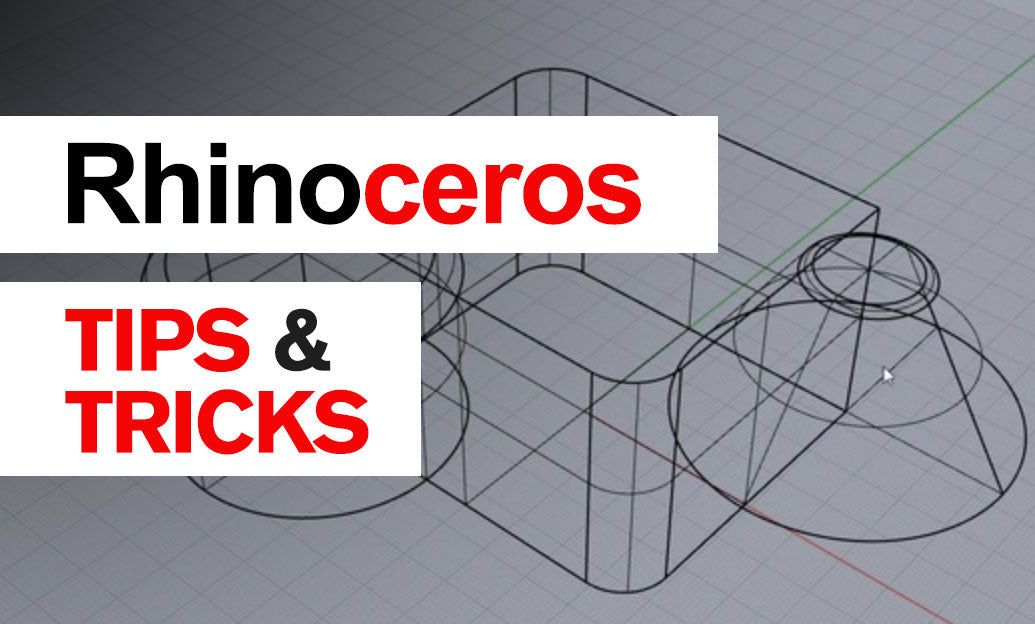Your Cart is Empty
Customer Testimonials
-
"Great customer service. The folks at Novedge were super helpful in navigating a somewhat complicated order including software upgrades and serial numbers in various stages of inactivity. They were friendly and helpful throughout the process.."
Ruben Ruckmark
"Quick & very helpful. We have been using Novedge for years and are very happy with their quick service when we need to make a purchase and excellent support resolving any issues."
Will Woodson
"Scott is the best. He reminds me about subscriptions dates, guides me in the correct direction for updates. He always responds promptly to me. He is literally the reason I continue to work with Novedge and will do so in the future."
Edward Mchugh
"Calvin Lok is “the man”. After my purchase of Sketchup 2021, he called me and provided step-by-step instructions to ease me through difficulties I was having with the setup of my new software."
Mike Borzage
Rhino 3D Tip: Optimizing Model Efficiency with the Solid Union Command in Rhino 3D
April 05, 2025 2 min read

The Solid Union command in Rhino 3D is a powerful tool that allows you to combine multiple solid objects into a single, unified solid. This is essential when you need to simplify your model by reducing the number of separate components, which can streamline further modeling and analysis.
Here’s how to effectively use the Solid Union command:
-
Select the Solids: Begin by selecting all the solid objects you wish to unite. These should be closed polysurfaces or extrusion objects.
-
Initiate the Command: Activate the Solid Union command by typing
BooleanUnionin the command line or by navigating to Solid > Union from the menu. -
Check for Intersections: Ensure that the solids overlap or intersect. Without intersection, the union cannot be performed.
-
Execute the Union: After confirming the selection, press Enter to execute the union. Rhino will process the command and merge the intersecting solids into one.
-
Verify the Result: Use the
Whatcommand to verify that the result is a closed solid polysurface.
Tips for Successful Solid Union:
-
Clean Geometry: Ensure all solids are properly constructed without gaps or anomalies. Use the
Checkcommand to identify issues. -
Align Normals: The normals of the surfaces should be oriented correctly. Use the
Dircommand to inspect and adjust normals if necessary. - Tolerance Settings: Adjust the model's absolute tolerance in units and settings if the union fails due to small gaps or overlaps.
- Simplify Complexity: If dealing with complex solids, consider simplifying them before performing the union to reduce processing time and errors.
Understanding the nuances of the Solid Union command enhances your modeling efficiency:
- Model Simplification: Combining solids reduces the number of objects, making the model easier to manage and edit.
- Preparation for 3D Printing: Ensures that the model is watertight and suitable for 3D printing or manufacturing processes.
- Improved Performance: Fewer objects can lead to better performance, especially in large or complex models.
Keep in mind that the Solid Union command modifies the original objects. It's advisable to:
- Duplicate Objects: Create backups of the original solids in case you need to revert changes.
- Incremental Saves: Use incremental saving to preserve stages of your model's development.
By mastering the Solid Union command, you can create cleaner and more efficient models, facilitating smoother workflow and better end results.
For more professional tips and resources on Rhino 3D, visit NOVEDGE, your go-to source for design software and expert advice.
You can find all the Rhino products on the NOVEDGE web site at this page.
Also in Design News

Cinema 4D Tip: Optimizing Collision Deformer for Realistic Surface Interactions in Cinema 4D
October 18, 2025 3 min read
Read More
Bluebeam Tip: Optimizing Field Data Collection with Bluebeam Field Tools
October 18, 2025 2 min read
Read More
V-Ray Tip: Optimizing Realistic Glass Material Rendering in V-Ray
October 18, 2025 2 min read
Read MoreSubscribe
Sign up to get the latest on sales, new releases and more …


